NEO ignites the robotics sector—what Robotic projects are worth paying attention to?
An overview of projects related to the Robotics sector.
The day before yesterday, Norwegian humanoid robot company 1X Technologies officially released the NEO robot and opened pre-orders, priced at $20,000. It also supports a monthly subscription model ($499 per month), with deliveries expected to begin in 2026. Tesla has also stated that robots are the next major profit point. It seems likely that robots will be the next main trend.
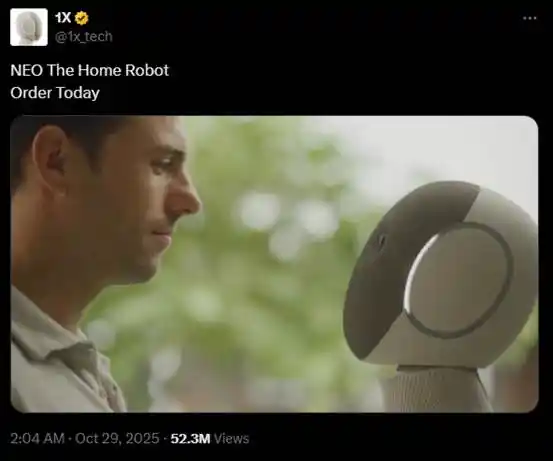
Humanoid robots capable of performing household chores such as taking out the trash, folding clothes, handing over items, and organizing tableware—these are things that appeared in many of our childhood essays, and are now about to become reality. Such news is undoubtedly a focus of attention for many people. In the crypto world, the robot-themed meme coin $NEO on Solana once broke through a market cap of $4 million, and currently still maintains a market cap of $2.7 million.

In addition, Echo, the on-chain fundraising platform created by Cobie and recently acquired by Coinbase for $375 million, has a $10 million Series C funding quota for 1X Technologies. However, since it was conducted in a private group, the specific details are unknown.
Besides meme coins and Echo's funding quota, robot-related projects in the crypto world have also attracted attention, with many players referring to this track as "Robotics." This article will organize and summarize projects related to the Robotics track.
OpenMind
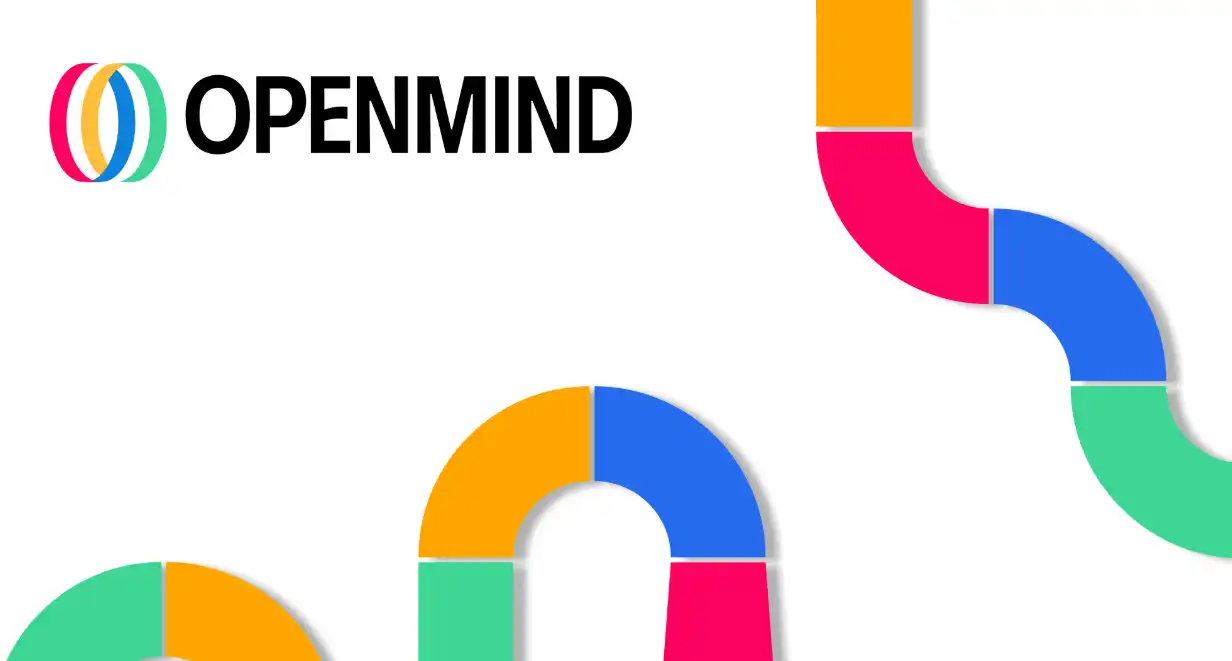
On August 4, according to official news, Silicon Valley-based intelligent machine infrastructure company OpenMind announced the completion of a $20 million funding round, led by Pantera Capital, with participation from Ribbit, Sequoia China, Coinbase Ventures, DCG, Lightspeed Faction, Anagram, Pi Network Ventures, Topology, Primitive Ventures, Amber Group, and several well-known angel investors.
OpenMind helps robots think, learn, and work by developing open-source software. Its native open-source AI robot operating system OM1 allows for the configuration and deployment of AI Agents in both the digital and physical worlds. Users can create an AI character to run in the cloud or on a physical robot in the real world.
In simple terms, OpenMind's OM1 is like creating an "AI brain" for robots. This "AI brain" can be collaboratively operated by multiple AI Agents, interact with multiple LLMs, and obtain data from various sources to perform tasks (such as helping users post on social media). Since OM1 is open-source, it is a highly adaptable robot operating system, similar to how Android is hardware-agnostic for mobile phones.
In addition, OpenMind has an on-chain robot identity network called FABRIC, designed to provide a verifiable trust layer shared by humans and robots. Humans can earn badges by sharing location data via maps, evaluating robot behavior, and developing on the network. For robots, every robot equipped with the OM1 system will join the FABRIC network, thus having a unique verifiable identity, and enabling robot commands, operation logs, ownership, and other related behaviors to be tracked on-chain.
OpenMind has not yet issued a token.
XMAQUINA
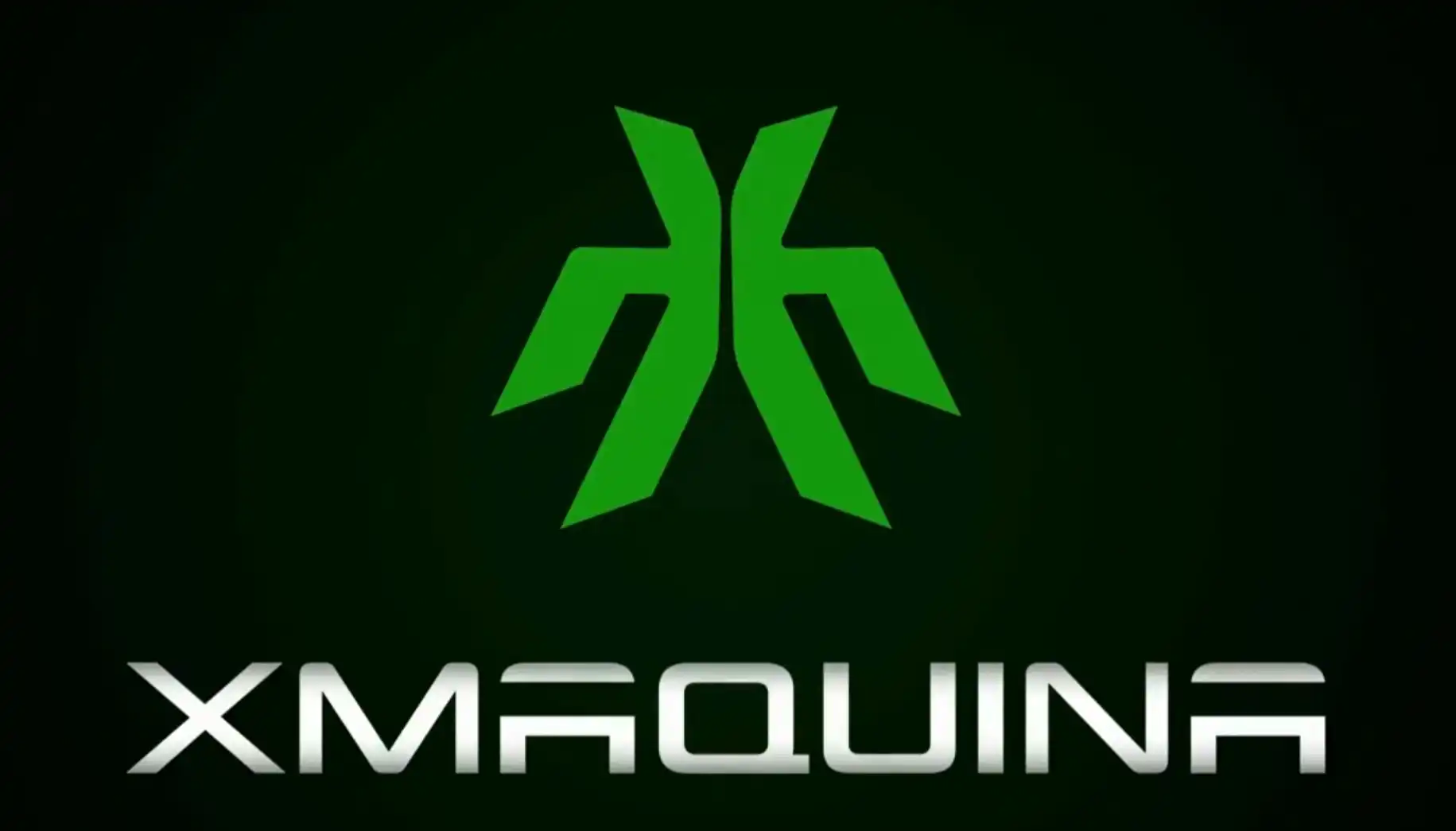
Robot investment DAO. Its governance token $DEUS has completed three rounds of sales, raising over $5.5 million in crypto assets. Currently, the DAO has begun using the auction proceeds to support Apptronik, Figure AI, and Agility Robotics, all companies in the humanoid robot field. From the treasury screenshot on the official website, the DAO's investments have already started to generate profits, with some single returns exceeding 100%.
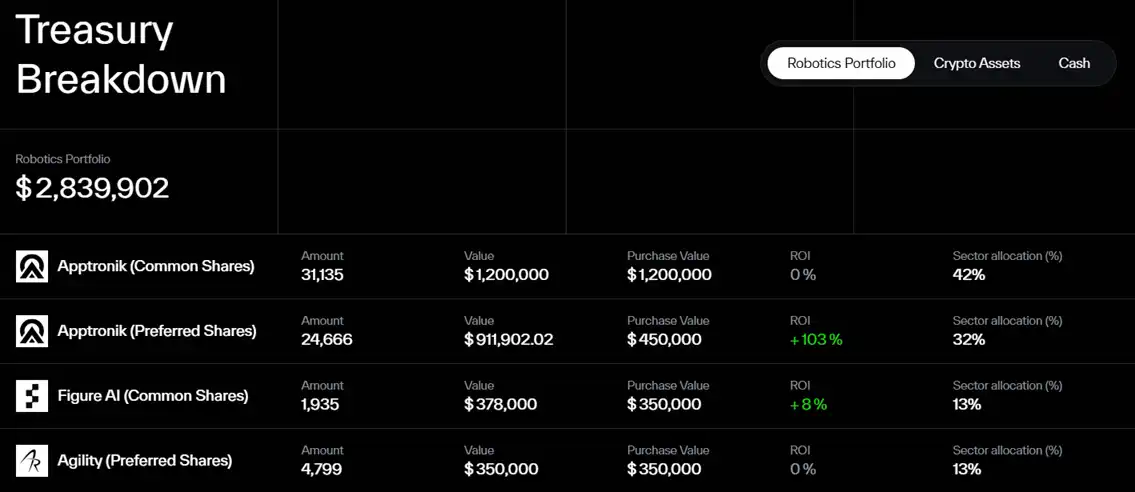
However, $DEUS has not yet had its TGE. At TGE, 33% of $DEUS sold to the community will be unlocked immediately, with the remaining 67% unlocked linearly over 12 months.
peaq
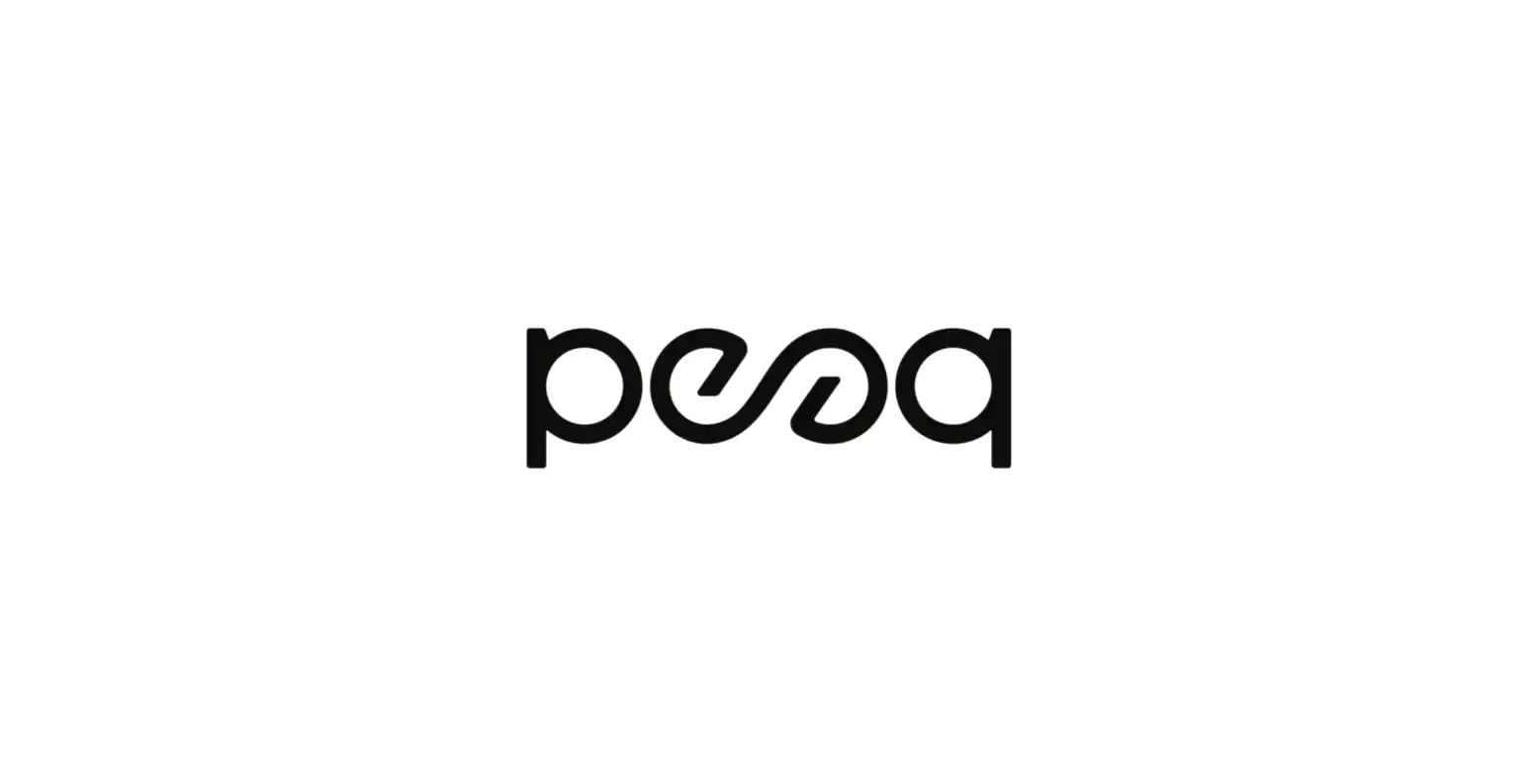
On March 27, DePIN Layer1 protocol Peaq completed a $15 million funding round, led by Generative Ventures and Borderless Capital, with participation from Spartan Group, HV Capital, CMCC Global, Animoca Brands, Moonrock Capital, Fundamental Labs, TRGC, DWF Labs, Crit Ventures, Cogitent Ventures, NGC Ventures, Agnostic Fund, Altana Wealth, and others.
Although initially focused on the DePIN narrative, the project is highly responsive to market trends, and has also followed up on the recently popular x402 project. In terms of robotics, peaq released the Robotics SDK in September this year, enabling robots to obtain autonomous identity, make and receive payments, verify data, and access the on-chain network economy.
In addition, peaq has a machine RWA marketplace, where machines are tokenized and placed on-chain as shared revenue-generating assets. At the 2025 Korea Blockchain Week main stage, peaq released the first tokenized, robot-operated farm, which has been deployed on the peaq chain and will distribute operating profits to token holders.
Currently, the circulating market cap of $peaq is about $110 million.
PrismaX

On June 17, PrismaX announced the completion of an $11 million funding round, with investors including a16z CSX, Volt Capital, Blockchain Builders Fund, Stanford Blockchain Accelerator, and Virtuals.
PrismaX is building an open coordination layer connecting remote operators, robot users, and robot companies. Operators can connect with users to remotely control robots and complete real-world tasks, while also collecting valuable data. They can also request real-world services such as logistics and advertising.
PrismaX features a protocol for remote robot operation, where companies can find experienced operators capable of complex tasks. Operators can choose to stake network tokens to increase trust and improve their chances of getting high-reward tasks. The rewards for stakers are related not only to the amount staked, but also to work quality, with additional bonuses for improved efficiency.
The data accumulated from remote operations will be used to train robots and improve their autonomy, which in turn will enhance the efficiency of remote operators, ultimately achieving highly or even fully autonomous robots.
PrismaX has not yet issued a token.
CodecFlow

CodecFlow provides a unified platform that can seamlessly run on the cloud, edge, desktop, and robot hardware, while supporting current popular APIs and legacy systems.
AI-driven operators respond to UI changes in software or changes in the robot environment through perception and real-time reasoning, addressing the vulnerability of traditional robotic automation processes that overly rely on pre-written scripts and are fragile even in the face of minor changes.
In short, it captures screenshots, camera images, or sensor data, then uses AI to process these external input data to handle observations or instructions, and finally executes decisions through user interface interactions.
Currently, the market cap of token $CODEC is about $16 million.
NRN Agents
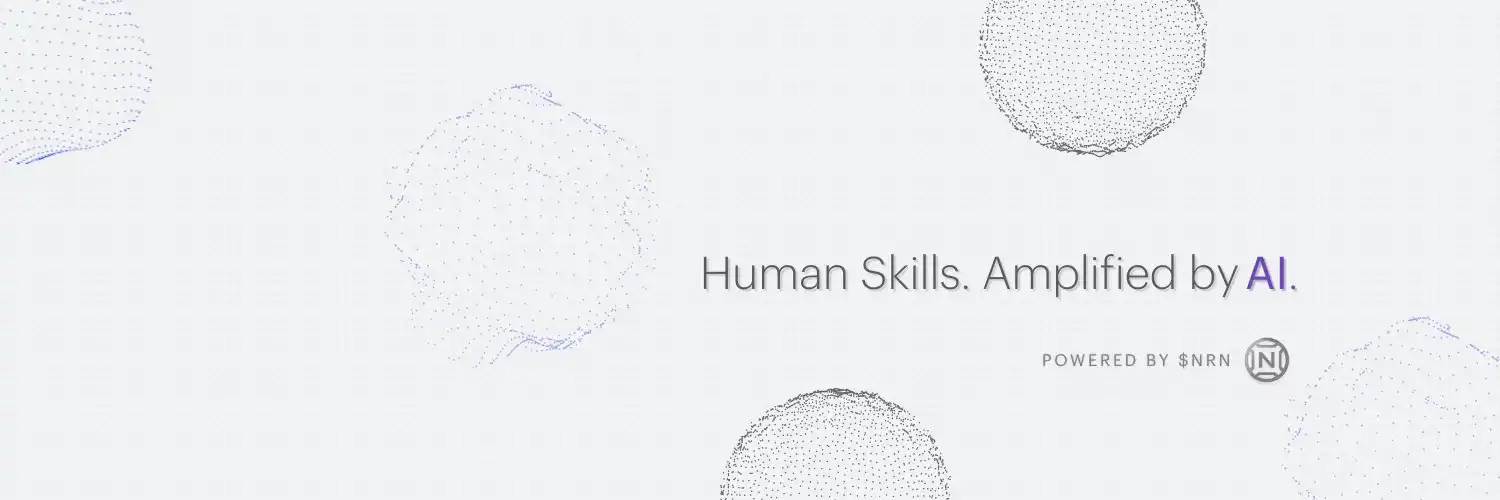
NRN evolved from the AI Agent battle real-time training chain game AI Arena. On October 28, 2021, developer ArenaX Labs announced the completion of a $5 million seed round led by Paradigm Capital, with Framework Venture Partners participating. On January 9, 2024, ArenaX Labs announced the completion of a new $6 million round led by Framework Ventures, with participation from SevenX Ventures, FunPlus/Xterio, and Moore Strategic Ventures.
Although the general process is also data collection->reinforcement robot learning, NRN leverages its rich experience in gaming to provide a browser-based experience, turning robot data collection into a game. Users can intuitively control simulated robots through the browser. During gameplay, the behavioral data generated by user operations is used to train real-world robot systems.
At this stage, the project will focus on robotic arms (RME-1) to validate data collection, real-time learning, and adaptability.
Currently, the market cap of token $NRN is about $11.7 million.
Auki
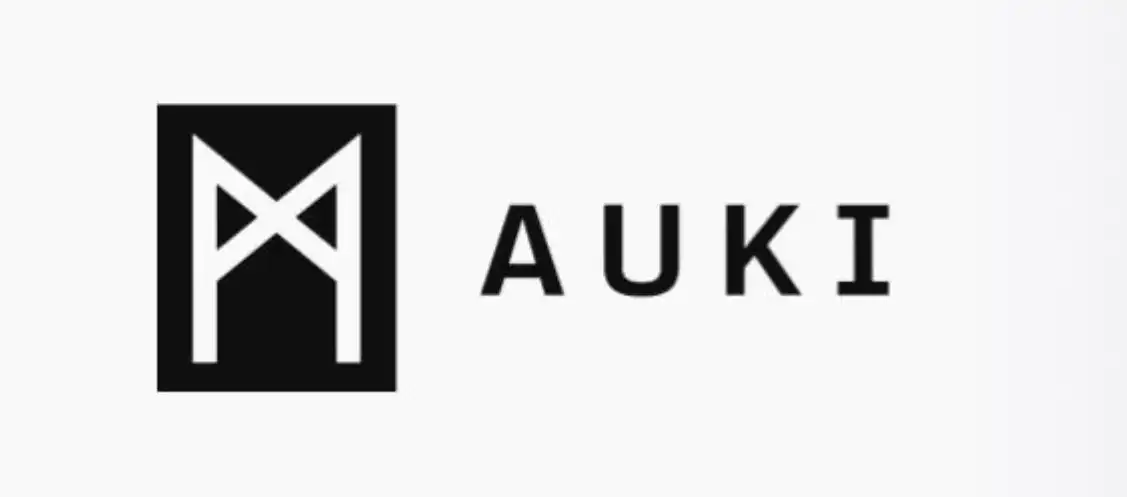
Auki's decentralized machine perception network Posemesh is used to connect humans, devices, and AI. Its core is a DePIN (Decentralized Physical Infrastructure Network) architecture that allows robots, AR glasses, and other devices to share location and sensor data in real time, collaboratively building a spatial understanding of the physical world, and providing a shared spatial view for robots, AR, and AI.
Multiple node roles are designed based on the Posemesh protocol. Computing nodes provide computing power, motion nodes (robot terminals) upload location and sensor data, reconstruction nodes generate 3D map models accordingly, and domain nodes manage 3D spaces. Each node receives $AUKI token incentives based on their contribution, driving a self-evolving machine vision network.
This network emphasizes privacy protection, avoiding single entities from monitoring users' private spaces, and can be applied in multiple scenarios such as retail (product placement optimization), property management (asset tracking), exhibition navigation, and construction/renovation.
Currently, the market cap of token $AUKI is about $52 million.
RobotStack
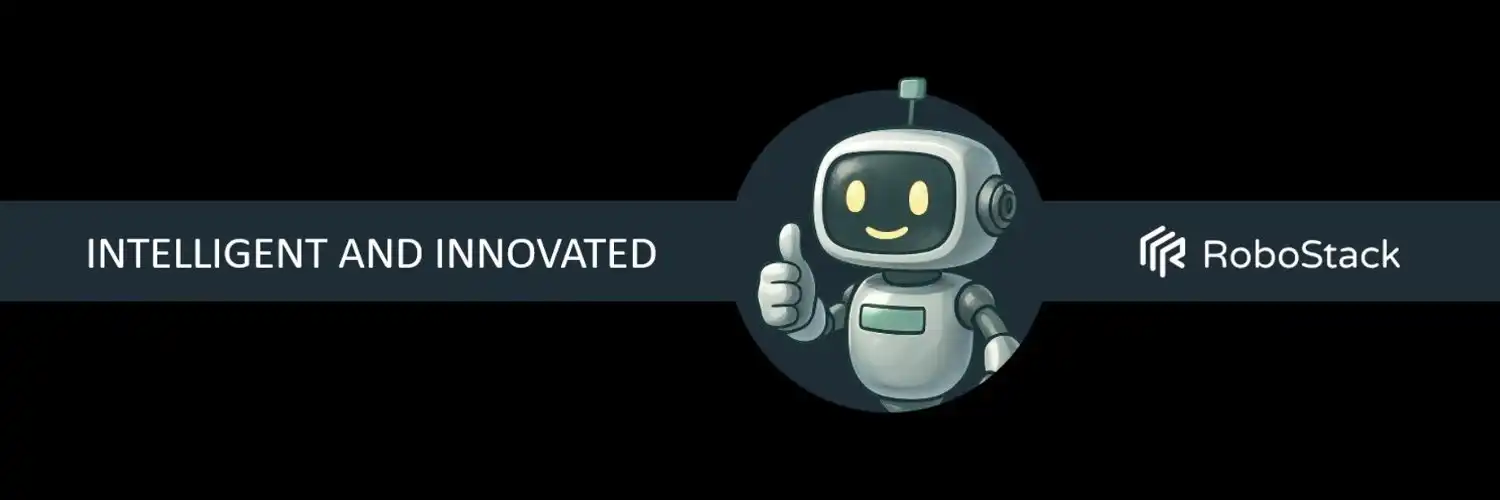
RoboStack is a cloud-based robot development and deployment platform that provides developers with simulation environments and sandbox testing. According to the official introduction, the platform can simulate real environments in the cloud, with secure sandbox mechanisms, high-performance computing capabilities, real-time metrics, and team collaboration features.
To solve the problem of robot technology being fragmented by different hardware, middleware, and communication standards, making integrated training difficult, RoboStack proposed the Robot Context Protocol (RCP), allowing secure communication between robots, AI agents, and humans. The simulated environment will include tokenized voting and incentive mechanisms to promote competition among developers and enthusiasts, facilitating the deployment of real robot applications in future multi-chain environments.
Currently, the market cap of token $ROBOT is about $3 million.
BitRobot
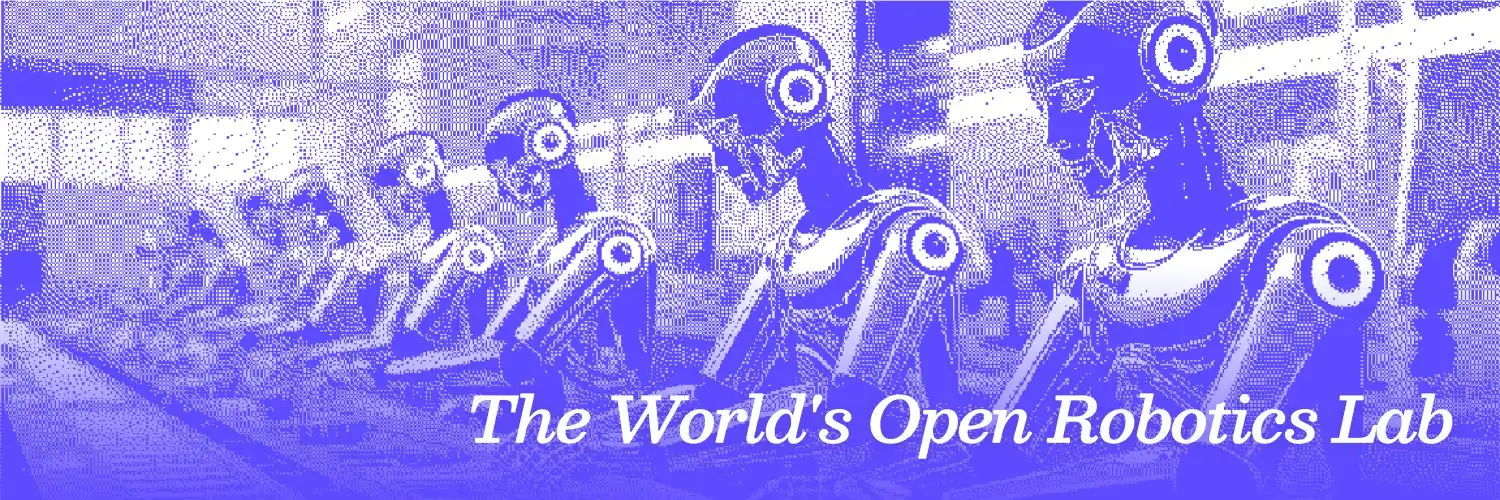
BitRobot Network is jointly developed by FrodoBots Lab and Protocol Labs, aiming to achieve distributed robot work and collaboration. Its key components include: Verifiable Robot Work (VRW, a quantifiable metric for network rewards used to define and verify robot tasks), Device Node Token (ENT, the unique identity identifier for robots in the system, existing in NFT form for device ownership and network access), and subnets as the operational layer for task execution (resource clusters that create value for the BitRobot network).
On February 14, FrodoBots Lab announced the completion of a $6 million seed round, bringing total funding to $8 million.
Currently, BitRobot has not yet issued a token. Notably, FrodoBots Lab is already selling robots. Earth Rovers, resembling real-life Mario Karts, are priced at $249. Players remotely control their sidewalk robots in a global treasure hunt, providing data for researchers to deploy and test their latest AI navigation models. This also has a probability of issuing a token.
Another game robot, ET Fugi, will also be launched in the future. Players will remotely control robotic arms to complete various 3D puzzle games and competitions. ET Fugi is also the first subnet of BitRobot.
Disclaimer: The content of this article solely reflects the author's opinion and does not represent the platform in any capacity. This article is not intended to serve as a reference for making investment decisions.
You may also like
Bitcoin risks ‘20%-30%’ drop as crypto markets liquidate $1.1B in 24 hours
Why is Zcash’s ZEC the only crypto pumping right now?
XRP price keeps losing ground despite upcoming Ripple Swell event
DeFi and TradFi must put aside their differences
